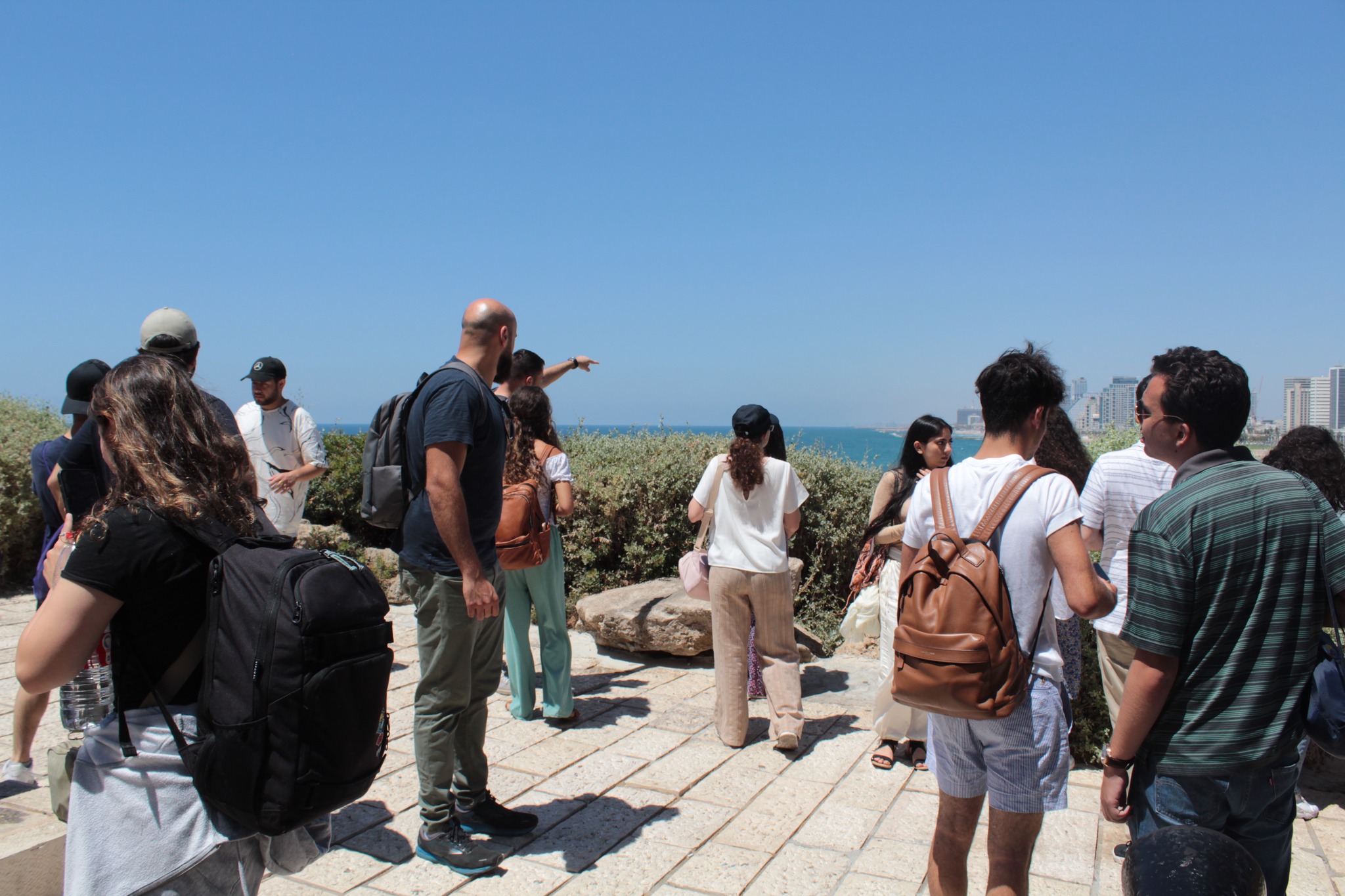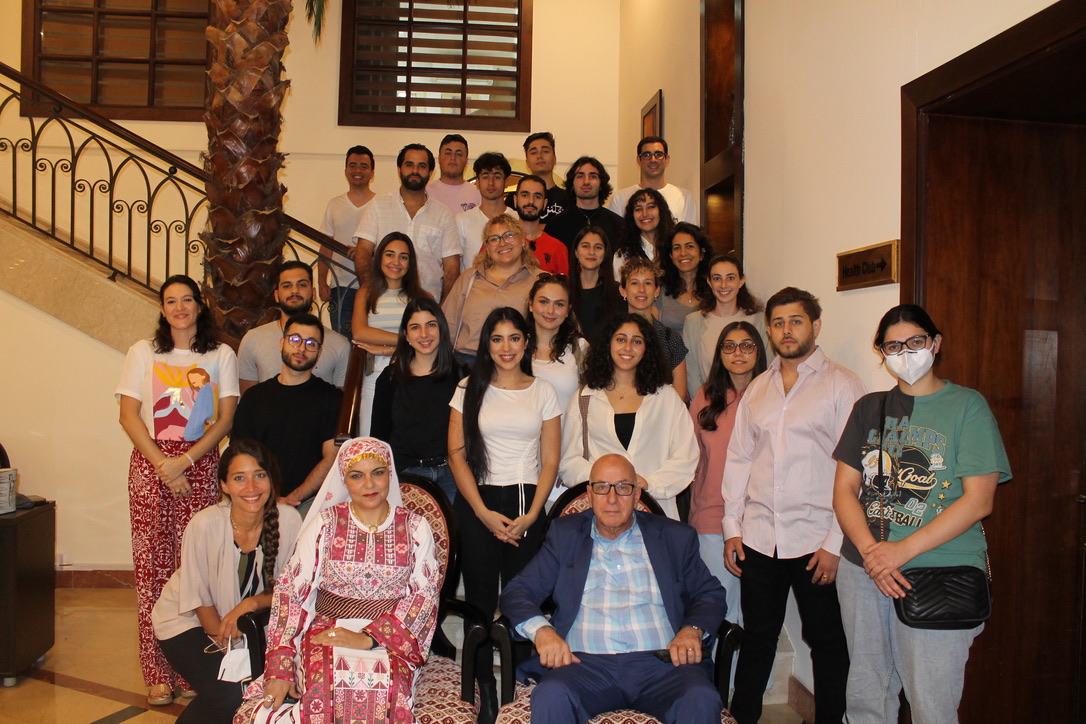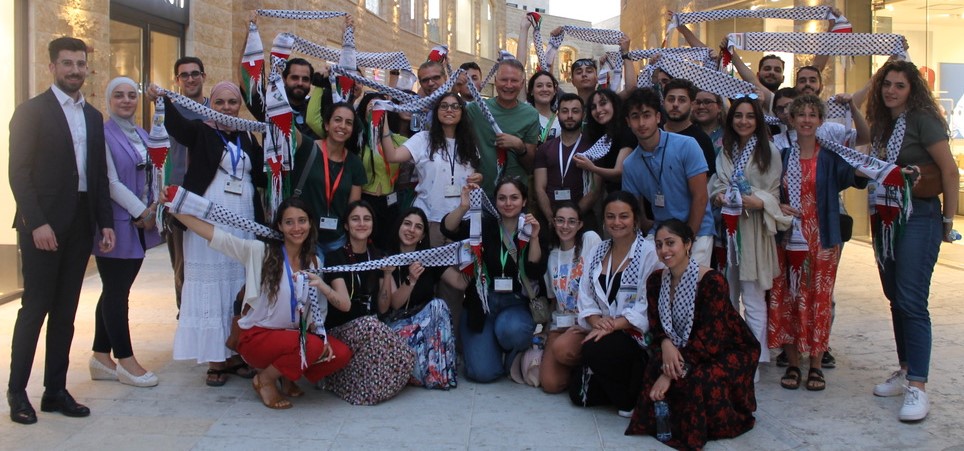KTH 2022 Journey Day 11 – Iqrit, Haifa, Akka
Day 11 – Going down the Coast of Historical Palestine
By: Zena Attallah
The day we went to Iqrit, Akka, Haifa, and Nazareth was truly an unforgettable journey. Our day began very early as the bus departed around 6 AM. We learned that Iqrit was a village raided and destroyed by Israel during the Nakba. Although it is almost completely deserted now, the original residents of the village are not permitted to return. After hearing about this, I realized that the illegal Israeli occupation is not only about establishing a safe secular state, but it primarily surrounds the complete ethnic cleansing of Palestinians.
Thinking about how this village is completely empty and Israel does not need or use the land for anything, yet still will not allow the residents to return, highlights how purely evil the occupation is. On the other hand, seeing that although the village has been destroyed, the fact that every day someone from the original village comes to take care of it to prove to the occupation that they are still present reflects the true resilience and resistance of the Palestinian people.
After departing from Iqrit, we drove to Akka where we learned that many of the original residents were expelled to Lebanon. The guide told us that pre ’48, most of the city was made up of wealthy Palestinians, and now only 8 of those original families remain. Those 8 families were annexed into the new state, and everything they owned was taken from them, forcing them to rebuy their houses from the state. Those who could not afford to repurchase their own house would be evicted and displaced from the home they once owned and most likely built themselves.
We later left Akka and drove to Haifa, where I noticed a few things from the bus window. The scenery looked much less like Palestine I was expecting, and more like the United States. The greenery reminded me of California, and given that they are both considered Mediterranean agricultural regions, I didn’t think much of it at first. The beaches reminded me of Miami, especially after seeing the large high rises by the sea. After taking a closer look, I noticed the architecture of the older Palestinian homes. This is something I normally like to look at in the West Bank and other parts of Palestine, but these buildings looked a bit odd to me. Many of them were broken down and actively destroyed. Seeing Palestinian homes with Israeli flags hanging from them was upsetting to see.
On our way to the hotel in Nazareth, we drove past a very European-looking landscape. The olive trees native to our Palestinian land seemed to have been substituted with non-native trees that did not provide anything for the land. It seemed that the wildlife had faded because of their lack of natural resources, and that made me realize that the people of Palestine were not the only victims of Al-Nakba. Still, the land itself was truly affected by Israeli colonization.
Being in Historical Palestine made me realize that the historic Palestine many of our grandparents knew may have become unrecognizable.





